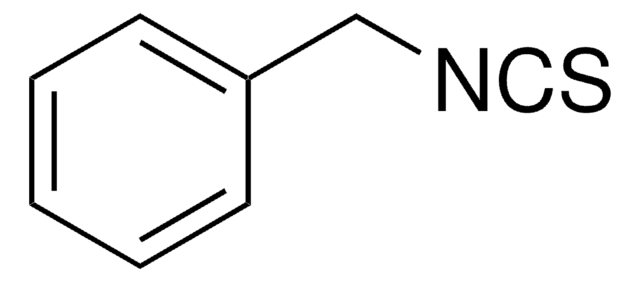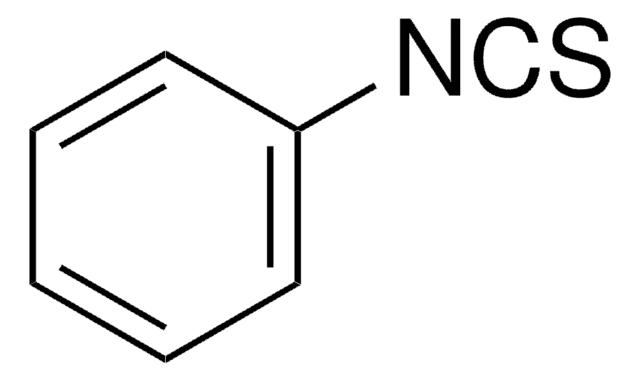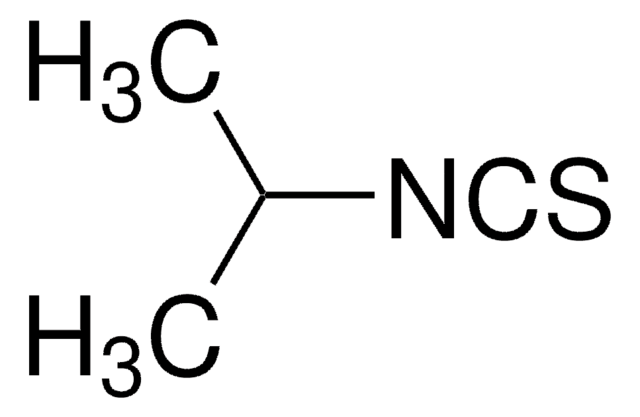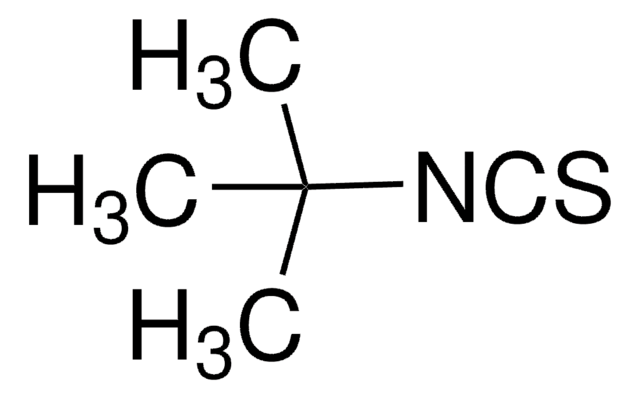E33904
Ethyl isothiocyanate
97%
Sinonimo/i:
Ethyl mustard oil
About This Item
Prodotti consigliati
Livello qualitativo
Saggio
97%
Stato
liquid
Indice di rifrazione
n20/D 1.512 (lit.)
P. ebollizione
130-132 °C (lit.)
Punto di fusione
−6 °C (lit.)
Densità
0.995 g/mL at 25 °C (lit.)
Stringa SMILE
CCN=C=S
InChI
1S/C3H5NS/c1-2-4-3-5/h2H2,1H3
HBNYJWAFDZLWRS-UHFFFAOYSA-N
Cerchi prodotti simili? Visita Guida al confronto tra prodotti
Categorie correlate
Avvertenze
Danger
Indicazioni di pericolo
Classi di pericolo
Acute Tox. 3 Dermal - Acute Tox. 3 Inhalation - Acute Tox. 3 Oral - Aquatic Acute 1 - Flam. Liq. 3 - Resp. Sens. 1 - Skin Corr. 1B
Codice della classe di stoccaggio
3 - Flammable liquids
Classe di pericolosità dell'acqua (WGK)
WGK 3
Punto d’infiammabilità (°F)
75.2 °F - closed cup
Punto d’infiammabilità (°C)
24 °C - closed cup
Dispositivi di protezione individuale
Faceshields, Gloves, Goggles, type ABEK (EN14387) respirator filter
Scegli una delle versioni più recenti:
Possiedi già questo prodotto?
I documenti relativi ai prodotti acquistati recentemente sono disponibili nell’Archivio dei documenti.
I clienti hanno visto anche
Il team dei nostri ricercatori vanta grande esperienza in tutte le aree della ricerca quali Life Science, scienza dei materiali, sintesi chimica, cromatografia, discipline analitiche, ecc..
Contatta l'Assistenza Tecnica.
















